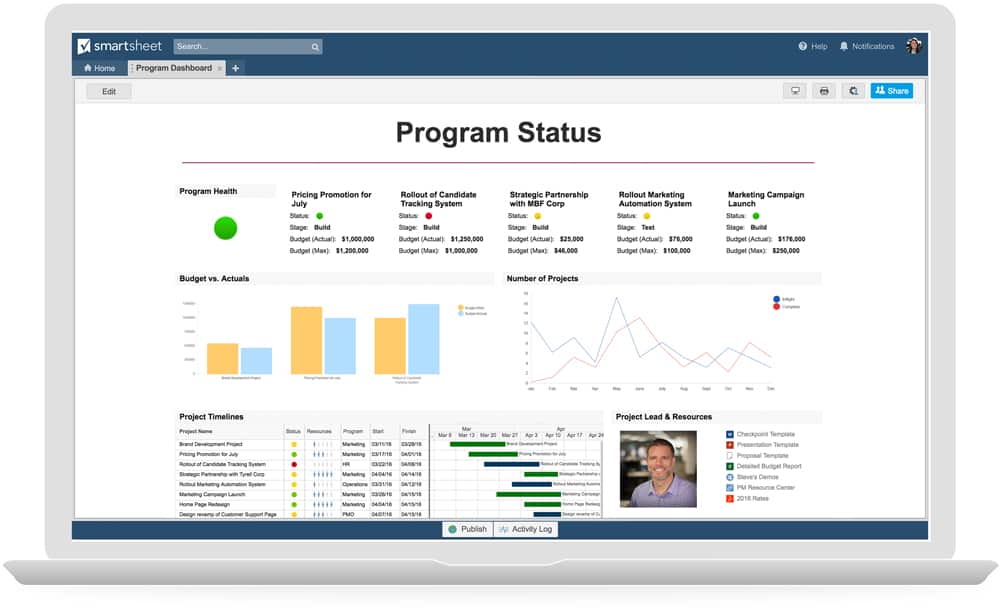One of the best ways to spot a productivity killer? Identify a process or communication tactic shoehorned into a tool that wasn’t originally built to address that very problem. One common workplace productivity killer hiding in plain sight is our meeting culture, and the slide decks these meetings are often beholden to. As we’ve morphed slide decks from presentation aids to status documents, increasing numbers of hours are wasted consolidating slide decks and cramming status updates into a static document.
Luckily, work management tools can help address this problem. Case in point: the Services Operations group at Cisco has proven that work management solutions can be a powerfully effective replacement — with game changing results.
The slide deck disaster delays data
The Services Operations group at Cisco plays a critical role in bringing Cisco’s mission to life. Yet as they looked to the future, this group had significant inefficiencies to address to truly support the rest of the organization.
Bi-weekly status reports were the rhythm of business for Services Operations, and all of the information gathered for this report stemmed from one colossal slide deck. Sydney Shackelford, services operations project manager, lived in the heart of the PowerPoint storm. “On a weekly basis, I would get multiple slide decks from different program managers, with status and updates, that needed to be consolidated down to one deck,” Shackelford explains. Each week, Shackelford would manually comb through the decks to identify updates and consolidate status for the bi-weekly report to their VP.
“There was at least a week’s delay in the accuracy of the data,” explains Shackelford. “So if there was an issue on Tuesday, it wouldn’t surface to the leadership level until the following week.” This delayed approach meant executives didn’t have the program data they needed to make decisions, stagnating business agility and resulting in opportunities lost, hundreds of hours wasted on outdated content, and frustration and loss of morale for team members.
The group had been trying to address the problem for months, but the original dashboard tool was stuck in the evaluation process. “Plus, we would have needed a full-time resource just to maintain the tool that would solve the problem,” says Shackelford.
A flexible solution saves hours
That’s when Shackelford and her boss decided to rethink the problem — and the solution. Smartsheet, a work management platform, has been used by teams across Cisco to manage programs and processes for years, and Shackelford and her team believed it could be the answer they were looking for.
“We began kicking around the idea of using Smartsheet on a Wednesday, and by Friday I had a dashboard template built out and ready to test,” says Shackelford. From there, the team has been able to test and iterate to refine the most effective program dashboard, providing them with a new approach to program updates. “Now, everyone has access to the program dashboards. Program leads can make updates to their status at the right time,” says Shackelford. No more PowerPoint updates, just real-time information.
Program agility has skyrocketed. “As soon as a program status flips from yellow to red, the right people are alerted right away. Better yet, we have line of sight into what caused the change,” says Shackelford. “We can drill down for details on the scope, schedule, and budget to get the full story behind what changed, but also see the path back to green.”
Real-time program information has not only eliminated updates via PowerPoint, it's optimized valuable time spent in meetings.
A new approach aligns an organization
“Using dashboards as our communication and reporting tool has been huge for us. Our leaders are able to drive conversations using the information that we have in our dashboards.”
—Sydney Shackelford, Services Operations Project Manager, Cisco
Decisions are made quickly, based on always current information. “We can much more easily see interdependencies and identify the potential long term-impact of a change or update. Because of that, we’re working more effectively with other teams, have clear line of sight to our priorities, and can much more efficiently work towards our goals,” Shackelford adds.
And news is spreading.
“It’s amazing to see how quickly this approach has spread,” says Shackelford. “Whenever we meet with a different group, they take one look at our dashboards and say, ‘We need this.’”
Services Operations has been able to shift from stagnant status management to active decision making. Gone are the days of multiple versions of status, replaced with a clear understanding of where program activities stand across the organization. And perhaps most importantly, Cisco is able to adapt quickly as the demands of today’s technology rapidly continue to evolve and change.
Want to see Cisco's story in action? Watch the video below.
